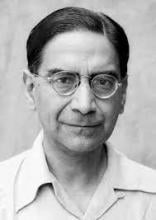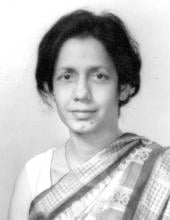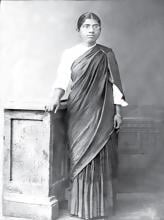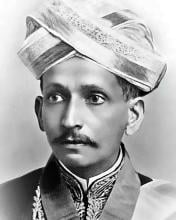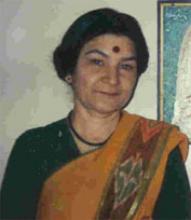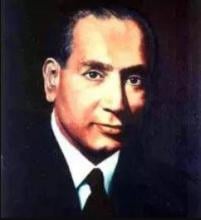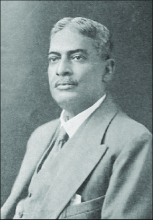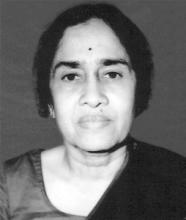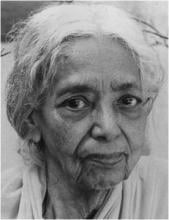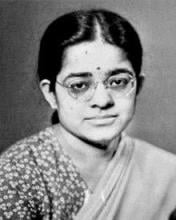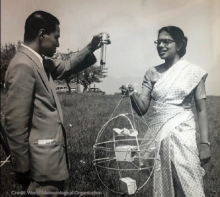India
News

23 Nov 2005
This paper reviews macro trends in the performance of regulatory institutions in electricity and telecommunications sectors in India and evaluates the direction and pace of their work.

20 Nov 2005
Using a database of infrastructure and utility bond issues made over the period 1996 to 2001, the authors investigate whether there has been a growing usage of the international bond market.

16 Nov 2005
In the present case however, the bruises were well discernible even after 49 days of its production. This case proves that a medicolegal expert must base his opinion regarding the age of bruise with great care.

13 Nov 2005
The General Agreement on Trade in Services and poor people's right to water

13 Nov 2005
Only one trained healthcare provider is available for every 16 villages. Although, more than 70% of India's population lives in rural areas, only 20% of the total hospital beds are located in rural area.

09 Nov 2005
Despite the improvement in newborn health care services neonatal and infant mortality rate has not significantly declined. In India 26 million babies are born every year, out of which 1.2 million die before completing the first four weeks of life.

09 Nov 2005
The commonest method for committing homicide in Benin City was by firearms, while ingestion of poisons, particularly ‘Otapiapia’ an insecticide, is the commonest method for committing suicide in this region.

30 Oct 2005
This study was formulated with an objective of studying the factors influencing the utilization of health services in the spectrum of antenatal, intranatal and postnatal periods of a mother.

26 Oct 2005
Voltage fluctuations have been minimized, greater supply made available, and costs reduced. All this was achieved through the ABT (availability-based tariff) introduced in 2000.

23 Oct 2005
Mining is carried out in India in different geological, topographical, and climatological settings. As a result, a variety of environmental management practices, suitable for individual mineral deposits and locations have been developed.

18 Oct 2005
It seems possible to prevent I-R injury by the administration of some medicament before reperfusion and by regulation of endogenous antioxidant enzymes.

16 Oct 2005
A study was conducted in 96 females suffering from PMS. Behavioral symptoms appearing during PMS were noticed. It was found that there is a substantial link between PMS and behavior alterations. Depression, aggression, irritability etc.

16 Oct 2005
Young boys were allegedly kidnapped and kept under illegal custody for months together. After demoralization had set in due to prolonged confinement, surgery was done on their private parts and female hormones were given to the persons.

14 Oct 2005
The age of ossification of different centers at wrist joint i.e. Carpals and lower ends of radius and ulna have been studied in pediatric age group in central Rajasthan. The study included 244 healthy children of both sexes up to 12 years of age

12 Oct 2005
Males preferred poisoning and hanging whereas females preferred self-immolation (burns) to end their own lives.

12 Oct 2005
New journal launched at www.indianjournals.com

09 Oct 2005
New free full text journal launched at www.indianjournals.com

05 Oct 2005
This study showed that existing Neonatal Intensive Care Unit environment has very high sound pressure levels. This can cause hearing impairment, sleep disturbances, somatic effects, impaired auditory perception and affect emotional development in babies.

02 Oct 2005
Rabies, a serious health hazard, affects central nervous system of mammals and is caused by rabies virus. The rabies glycoprotein is an ideal candidate for use in the construction of a subunit marked vaccine.

28 Sep 2005
Poisoning is one of the major causes of morbidity and mortality in pediatric population. Majority of the patients were toddlers between the ages of 1 and 3.

25 Sep 2005
The work of MSSRF over a decade has generated innovative concept schools like Biovillage, Village Knowledge Centres, Virtual Academy, Village gene, seed, grain and food banks to address compelling issues of the poor and provide remedies.

25 Sep 2005
Farmers who own tube wells and enjoy unlimited access to groundwater, are not fully confronted with the opportunity cost of using water due to heavily subsidized electricity, and divert the water for growing crops that are economically inefficient.

21 Sep 2005
In the scenario of imminent energy crises fuelled by huge import bills and rising prices of petro-based products, biofuels seem to be options of the future.

14 Sep 2005
Snakebite is one of the common causes of death in rural and suburban areas of tropical countries such as India. In the present case, it was a mystery as to how the snake could bitten the victim at the back of the head.

11 Sep 2005
Pharmacological screening revealed that the drug "Savveera Chendooram" has got potent Anti-inflammatory (both acute and chronic), Anti-pyretic and Analgesic actions.

04 Sep 2005
This preliminary study on the drug Pandanus Tectorius has been experimentally studied to prove the statement told in Traditional Indian Medicine (Siddha) literatures for its uterine stimulant action.

31 Aug 2005
In this study, a Siddha drug, “Saveera Chendooram” which was prepared as per the procedure mentioned in the ancient Siddha literatures is subjected to Anti-microbial sensitivity testing.

06 Jul 2005
This page is a simple catalogue of 124 medicinal herbs frequently used by CAM (Complementary and Alternative Medicine). This section is aimed at helping to give an idea regarding the herbs used for medicinal purpose.
12 Jun 2005
Antibiotic resistance is a rising concern. This research compares two different brands of vaccine, ie the investigational vaccine and an already marketed vaccine with brand name 'X', in healthy subjects aged between 10 and 25 years
12 Jun 2005
Open reading frame yjbI of Bacillus Subtilis codes for truncated hemoglobin
Events
Sorry, no events coming up for this topic.
Researchers
Sorry, no researchers coming up for this topic.
Giants in history
Physicist and statistician Prasanta Chandra Mahalanobis (29 June 1893– 28 June 1972), who founded the Indian Statistical Institute in 1931, is known for his pioneering application of statistics to practical problems.
Sálim Moizuddin Abdul Ali (12 November 1896 – 20 June 1987), commonly referred to as the Birdman of India, was the first person to conduct systematic surveys of birds from across India.
Indian botanist Shipra Guha-Mukherjee (13 July 1938 – 15 September 2007) made a breakthrough discovery that enabled the genetic study of plants and, by extension, the development of improved varieties of rice, wheat, potatoes, and other crops.
The founder of the Adyar Cancer Institute in India, Muthulakshmi Reddy (30 July 1886 – 22 July 1968), fought to uplift women and girls from impoverished situations.
Maharani Chakravorty (1937 – 2015) was one of India’s earliest molecular biologists whose research paved the way for advances in the treatment of bacterial and viral infections.
Archana Sharma (16 February 1932 - 14 January 2008) conducted research into plant and human genetics that expanded the understanding of both botany and human health. In relation to botany, she uncovered the means by which asexually-reproducing plants evolve into new species.
Sir Mokshagundam Srinivasa Shastry Vishveshwarayya (15 September 1860 – 14 April 1962) is widely regarded as India’s most outstanding engineer. In a career that spanned almost his entire life, Vishveshwarayya played a pivotal role in several engineering projects, including designing the Krishnarajasagara dam that is still the source of irrigation and drinking water for parts of Karnataka today.
A pioneer of bio-organic chemistry, Darshan Ranganathan (4 June 1941 – 4 June 2001) is remembered for developing a protocol for synthesising imidazole, a compound used to make antifungal drugs and antibiotics. Widely considered India’s most prolific researcher in chemistry, she also published dozens of papers in renowned journals on protein folding, molecular design, chemical simulation of key biological processes, and the synthesis of functional hybrid peptides and nanotubes.
Ground-breaking cancer researcher Kamal Jayasing Ranadive (8 November 1917 – 11 April 2001) advanced the understanding of the causes of leukaemia, breast cancer and oesophageal cancer through the use of animal models. She was also among the first to recognise how susceptibility to cancer is linked to tumour-causing interactions between hormones and viruses.
Birbal Sahni (14 November 1891 – 10 April 1949), a pioneer of Indian palaeobotanical research, and founder of what is now the Birbal Sahni Institute of Palaeosciences in Lucknow, made multiple contributions to the study of prehistoric plants. These include the discovery of a new group of fossil gymnosperms (named Pentoxylae), reconstruction of the extinct Williamsonia sewardiana plant, and description of a new type of petrified wood from the Jurassic age.
Indian scientist and physician Upendranath Brahmachari (19 December 1873–6 February 1946) is best known for creating a drug called Urea Stibamine, used to safely and reliably treat visceral leishmaniasis (or Kala-azar), a severe infection caused by the Leishmania parasite.
In 1939, biochemist Kamala Sohonie (18 June 1911 – 28 June 1998) became the first woman to be accepted into the Indian Institute of Science (IISc).
Physicist Narinder Singh Kapany (31 October 1926 – 4 December 2020) pioneered the use of optical fibres to transmit images, and founded several optical technology companies. Born in Punjab, India, he worked at a local optical instruments factory before moving to London for PhD studies at Imperial College. There, he devised a flexible fibrescope to convey images along bundles of glass fibres.
Indian organic chemist Asima Chatterjee (1917 to 2006) studied the medicinal properties of plant products, especially compounds known as vinca alkaloids.
Meghnad Saha (6 October 1893 – 16 February 1956) was an Indian astrophysicist best known for formulating the Saha ionization equation which describes the chemical and physical properties of stars.
Subrahmanyan Chandrasekhar (19 October 1910 – 21 August 1995) was an Indian astrophysicist who studied the structure and evolution of stars.
Sir Chandrasekhara Venkata Raman (7 November 1888 – 21 November 1970) was an Indian physicist who performed ground-breaking research in the field of light-scattering.
Janaki Ammal Edavalath Kakkat (4 November 1897 – 7 February 1984) was an Indian botanist who studied plant chromosomes and genetics.
Srinivasa Ramanujan (22 December 1887 – 26 April 1920) was a math prodigy and widely considered one of India’s greatest mathematicians. Despite having almost no formal training in mathematics, he made substantial contributions to mathematical analysis, number theory, infinite series and continued fractions.
Gopalasamudram Narayanan Ramachandran (8 October 1922 – 7 April 2001) is best known for developing the Ramachandran plot to understand the structure of short chains of amino acids, known as peptides.
Rajeshwari Chatterjee (24 January 1922 – 3 September 2010) was the first female engineer from Karnataka in India.
Bibha Chowdhuri (1913 – 2 June 1991) was an Indian physicist who researched on particle physics and cosmic rays. In 1936, she was the only female to complete a M.Sc. degree at the University of Calcutta.
Anna Mani (23 August 1918 – 16 August 2001) was an Indian meteorologist who contributed significantly to the understanding of solar radiation, ozone and wind energy by developing a wide range of measurement tools. One of India’s pioneering female scientists, Mani excelled in the male-dominated area of meteorology and became the Deputy Director-General of the India Meteorological Department.


